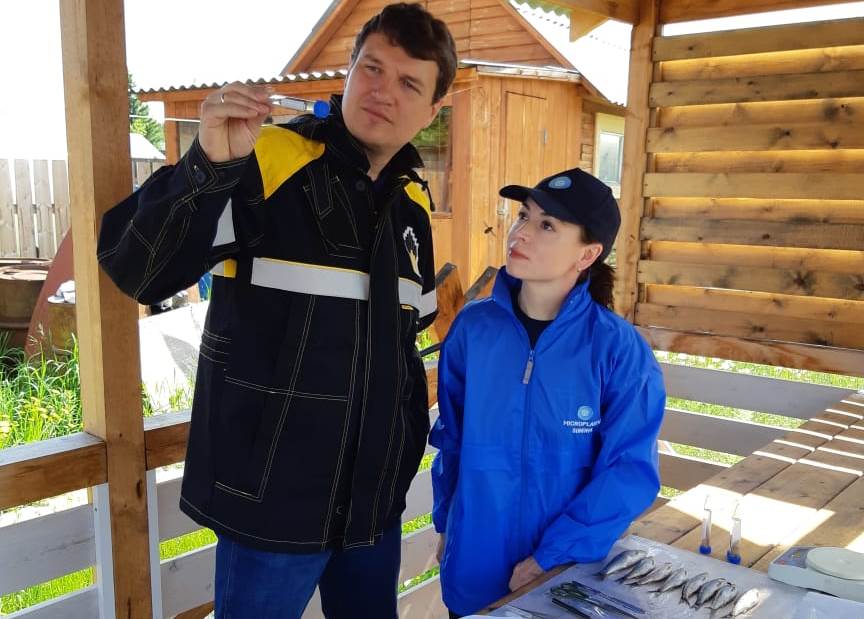"The team led by Gopala Krishna Darbha focuses on how nano- and microparticles accumulate in living organisms and what effect it has on them, as well as developing cheap and effective technologies for cleaning pollution," explains Julia Frank, director of the Center for Microplastics in the Environment of the TSU Biological Institute. "IISER Kolkata has cutting-edge equipment that ensures accurate results of the Raman microspectroscopy. It allows us to study microplastic in biological objects and, most importantly, identify the type of polymers discovered."
As Julia Frank says, in Russia the analysis of microparticles in biosamples is still in the developmental stage, and therefore TSU biologists gladly accepted the proposal of colleagues from India to analyze the fish samples collected in Siberian rivers. The IISER laboratories studied samples of common dace. In the gastrointestinal tract of the fish they found microfibers and microfragments of polypropylene, PET, PVC and other polymers, whose source might be municipal wastewater and fragmentation of plastic trash in river waters.

TSU plans to send to India samples taken during monitoring of the Tom, Ob, and Yenisei. For 2021-2023 the project is being implemented with the support of the Russian Science Foundation. Joint research with colleagues from India will significantly broaden our understanding of the spread and accumulation of microplastic in Siberian fish populations.
"In laboratory studies, we concluded that microplastic is toxic for living organisms. The level of toxicity depends on the typе of polymer, fragment size, and the presence of chemicals and other pollutants associated with plastic fragments," explains Dr. Gopala Krishna Darbha, of the Indian Institute of Science Education and Research. "The research team led by Julia Frank is one of the leading experts in Siberia in the field of microplastic water pollution, as we gathered from their articles. Therefore, we wanted to collaborate with this team and learn which types of plastic accumulate in clear water fishes of Siberia, and if there is any variation in Siberian and Indian (or global) situations. The topic is very important, because from fish, microplastic travels up the food chain to other species."
TSU biologists intend to continue their studies and broaden them under a special consortium organized on TSU's initiative in 2021. The consortium united researchers in microplastic studies, both those with some research experience and those who only plan to engage with this topic.
Studying microplastic pollution aligns with one of the main areas of Strategy of Scientific and Technological Development of the Russian Federation. Aside from the support from the Russian Science Foundation, Tomsk State University is developing this research area under the federal program Priority 2030.






